

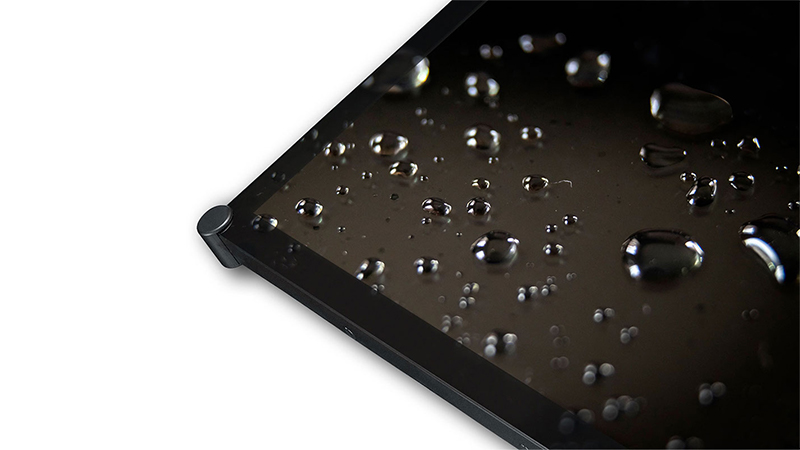
Imagine this: you’ve just installed a touch screen monitor for your customers to use in your outside shopping area. Everything seems to be going well…until a storm comes through and damages the monitor screen. Unfortunately, water and dust can affect touchscreen functionality. If you’ve ever dropped your smartphone in water and found that the colour was a little off or it was less responsive to touch, you know what we’re talking about.
There are many environments and applications where you need an IP65 touch screen monitor that is resistant to water and dust. These include touch screens used in industrial settings, as well as in commercial settings. In these commercial settings, a customer might come across the touch screen display at Point-of-Sale, at kiosks in entertainment venues, at restaurants, and more.
Projected Capacitive (PCAP) touchscreens have better protection when it comes to the intrusion of dust, dirt, and other types of debris. This is even more so than many other touchscreen device types. Additionally, PCAP touchscreens are often designed with an emphasis on water and moisture resistance.
The resistance of touch panels against particles and water is usually described through the Ingress Protection (IP) rating, which consists of two numbers. How do you find the right number?
The IP Rating, short for the Ingress Protection Rating, is used to rate the effectiveness of the sealing properties of an electrical enclosure against the intrusion of foreign bodies (dirt, tools, etc.), as well as against the intrusion of moisture. There are two different numbers in the IP Rating. Each one means something different.
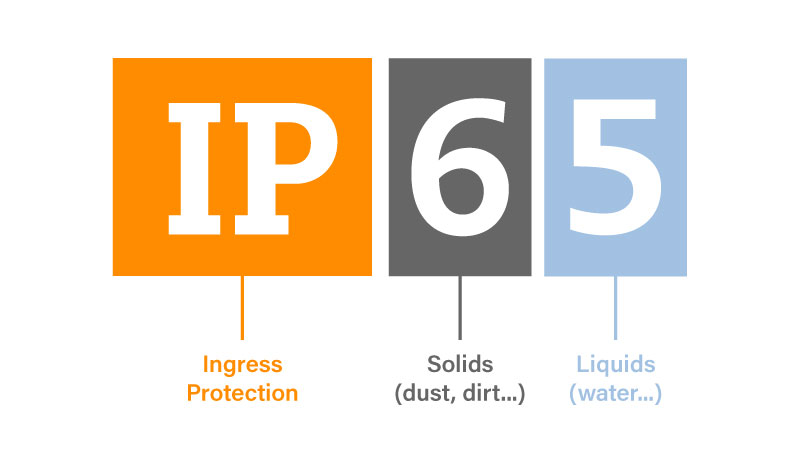
The first number, which ranges from 0 to 6, represents the level of protection against solid objects. This is according to the size of each object. The higher the number, the better the item is better protected against these objects.
The second number, which ranges from 0 to 9, is related to the level of resistance in relation to liquid ingress. This type of ingress includes drips, sprays, and submersion. The amount of the liquid, as well as its direction toward the enclosed item, determines the protection level against liquids. The test also specifies the delivery pressure, the distance between the enclosure and the nozzle, the nozzle sizes for defining the water jets or spraying water, and the testing time. Let’s review each of these now:
| Level | SOLIDS |
|---|---|
| 0 | No protection |
| 1 | Protected against objects that are 50 mm in diameter or more (e.g. a hand). |
| 2 | Protected against objects that are 12.5 mm in diameter or more (e.g. fingers). |
| 3 | Protected against objects that are 2.5 mm in diameter or more (e.g.screwdrivers or thick wires). |
| 4 | Protected against objects that are 1 mm in diameter or more (e.g. most wires). |
| 5 | Dust protected. Can withstand small quantities of dust and particles. Will not interfere with the operation of the equipment. |
| 6 | Dust-tight. Completely protected against dust and particles. |
| Level | LIQUIDS |
|---|---|
| 0 | No protection |
| 1 | Protected against droplets that fall vertically. Limited ingress permitted. |
| 2 | Protected against vertically falling droplets with enclosure tilted at a 15-degree angle. Limited ingress permitted. |
| 3 | Protected against spraying water up to 60 degrees from the vertical. Limited ingress permitted for 3 minutes. |
| 4 | Protected against splashing water from any direction. Limited ingress permitted. |
| 5 | Protected against low-pressure jets (6.3mm nozzle) directly applied from any direction. |
| 6 | Protected against high-pressure jets (12.5mm nozzle) directly applied from any direction. |
| 7 | Protected against 30 minutes of immersion in water up to 1 meter. |
| 8 | Protected against immersion in water under pressure for long periods. |
| 9K | Protected against high-temperature, high-pressure, steam-cleaning, and wash downs. |
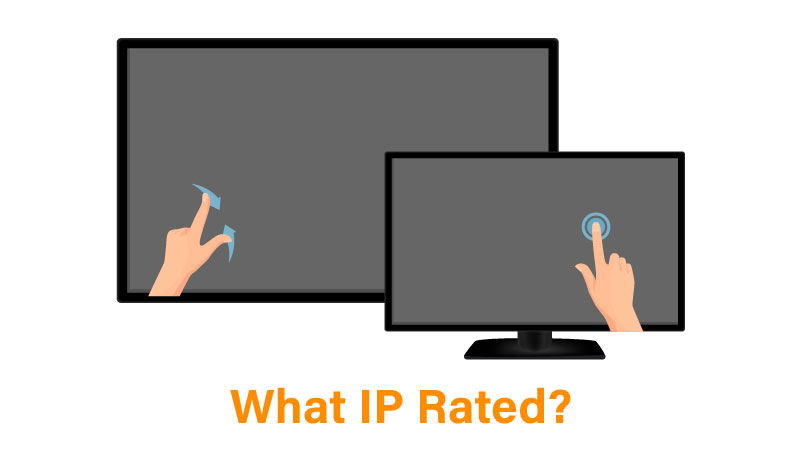
When it comes to the IP rating you need for a touch screen monitor, the highest protection isn’t necessary. In places that will have a lot of dust, debris, or where there’s the potential that the screen will be in contact with any solids or liquids, you need to ensure:
Depending on your space, you will need low or high IP ratings. Low IP ratings are mainly for indoor settings, where jetting water will never be an issue. Temperature-controlled areas like office buildings would not require high IP ratings.
Low IP ratings are also appropriate for aluminium extrusions, within sealed signage, and protected use within sealed products.
High-IP-rated touch screen monitors, on the other hand, are used for outdoor locations that are subjected to greater amounts of liquid and dust. These are usually areas with heavy foot traffic, wet locations, and high-contact areas. High-contact areas are ones where many people will be touching the touch screen monitors. These include areas such as transportation facilities and dirty warehouses.
The most common IP ratings are IP65, IP66, and IP67. When you have a touch screen with the IP65 rating, it’s water-resistant. When it has the IP66 rating, it’s water-resistant specifically against powerful jets. When the rating is IP67, the touch screen can resist complete submersion for a certain period of time. The IP68 rating is sometimes used too, which means that the touch screen can resist complete submersion for an even longer period, and down 3 metres.
However, you may now be wondering: which one is best for my commercial space? You know if you need a high or low IP rating, but you don’t know exactly which one. We’ll cover this now.
How do commercial users use touch screen monitors? There are many different ways, such as self-service kiosks, wayfinding, information kiosk, point-of-sale, or digital POP display. The scenarios also vary depending on what type of commercial space you run.
If you have a retail store, you can use a touch screen with the brightest and most colourful light industry technology to draw people into your store. Also, with an interactive screen, your customers can have fun while they shop or find out about what you have in stock.
Additionally, your employees can use the touch screen for great productivity. You can also provide service to customers 24/7 and speed up your customer experience, allowing them to make orders fast.
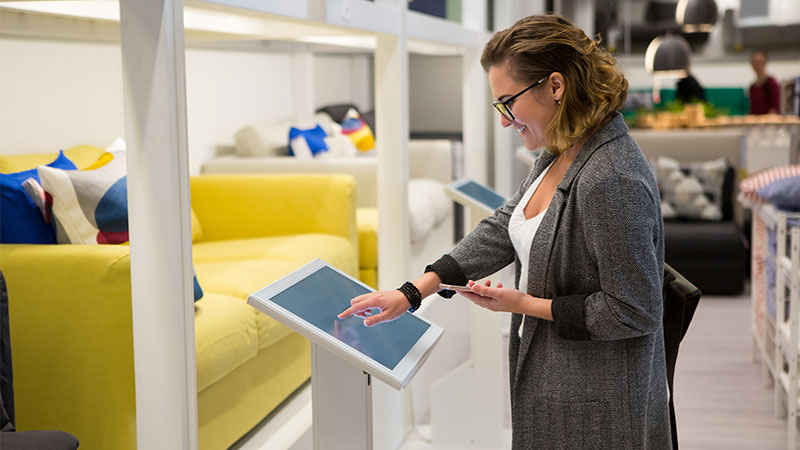
If you have a transportation facility, your visitors can check in with a simple process and easily find shops using an interactive map. They can also enjoy a drink or meal while they wait for their train or plane while also getting real-time updates of their departure time and gate.
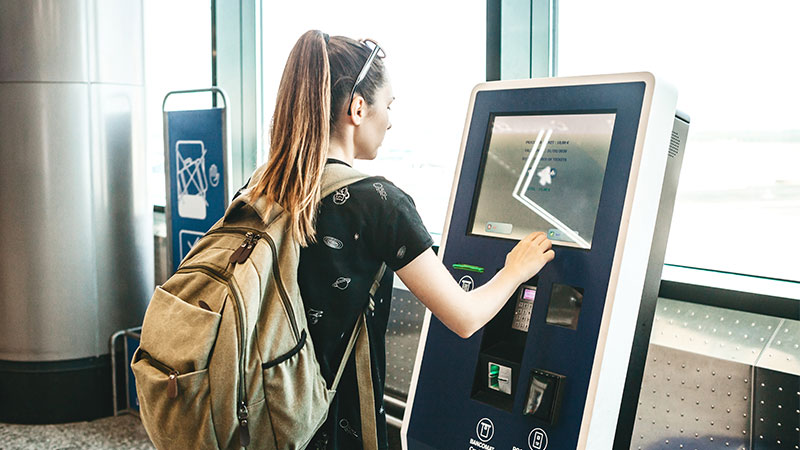
On the other hand, if you install a touch screen monitor in your museum, your visitors can learn more about exhibits, play educational videos, and find their way to different parts of the museum, such as the gift shop.
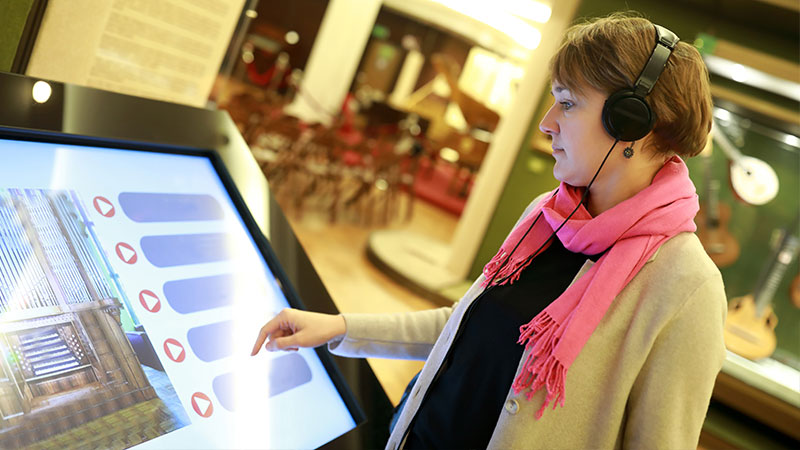
If you have a hospital to run, touch screens can help to improve activities such as check-in, registration and information distribution. A touch screen monitor can assist patients’ friends and family quickly find where they need to go to see a loved one. This takes essential time off your hospital administrative staff’s hands.
You can also use a touch screen to inform your patients about procedures before they go in for an operation. In pediatric offices, you can make the touchscreen interactive so that children learn a bit more about the human body.
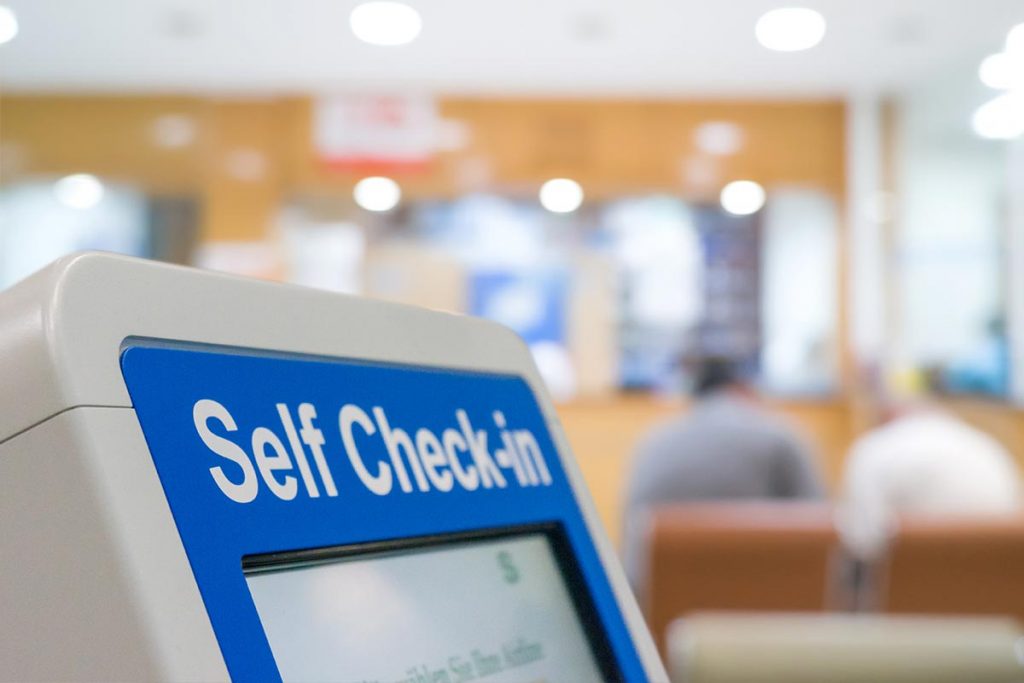
Most retail and restaurant environments need hardware that has a minimum of an IP54 rating. However, you may need an even higher rating. How do you know?
IP ratings that are higher than 54 are proper for locations with flying particles and debris. This is because of their high level of durability. This makes them perfect for areas with a large amount of foot traffic, like stadiums, convention centres, and transportation facilities.
Additionally, they’re great for wet work areas, such as bars or recreational facilities. They can also be used in places where the screens will be touched by many people, such as hospitals and airports.
Ratings within the IP54 to IP65 range can keep the screen dry and safe. These ratings are also strong enough to stop airborne particles from damaging the inside and outside of the screen.
When it comes to using a touch screen for industrial applications, things are a little different with the light industry. Most consumer-oriented manufacturers work in this industry, including manufacturers of home appliances and consumer electronics. Also included are manufacturers of furniture, automobiles, clothes, and food.
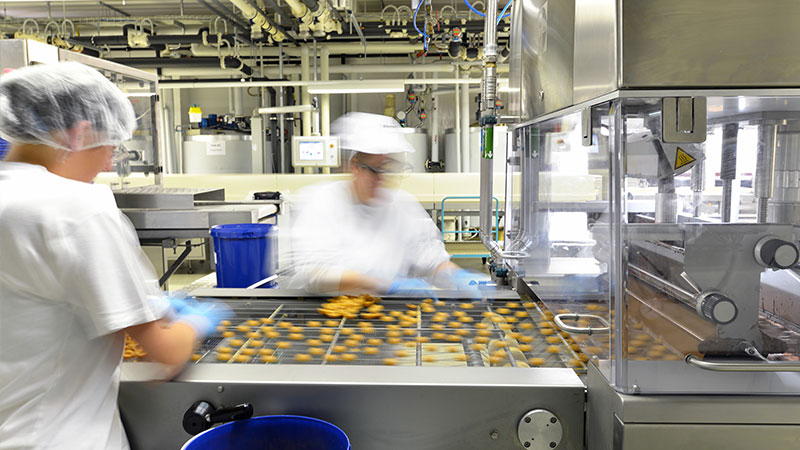
Touchscreens are used by manufacturing and distribution facilities in industrial control applications. This is because they rely on uncomplicated interfaces so they can minimize intervention and error. These control interfaces make it possible for industrial workers to improve efficiencies, simplify processes, reconfigure operations, and control devices. They are an economic alternative to switches and buttons, which are traditional.
Touch panels used by workers in industrial environments have to be resistant to chemicals, liquids, dust, and dirt. They must also be highly durable and long-lasting.
Depending on the sector, they must be able to work when the person using them is wearing protective gloves. Additionally, they must be able to operate properly even in the most extreme conditions. These include frost, high humidity, heat, and so on. For this reason, the IP rating for industrial settings is a bit higher than the minimum for commercial settings.
Touch screen monitors that are industrial usually have an IP65 or IP67 rating. The options are the “Front side” (where only the front side is protected) and the “Full IP” (all sides are protected).
In this case, a Front IP65 touch screen could be the right choice.
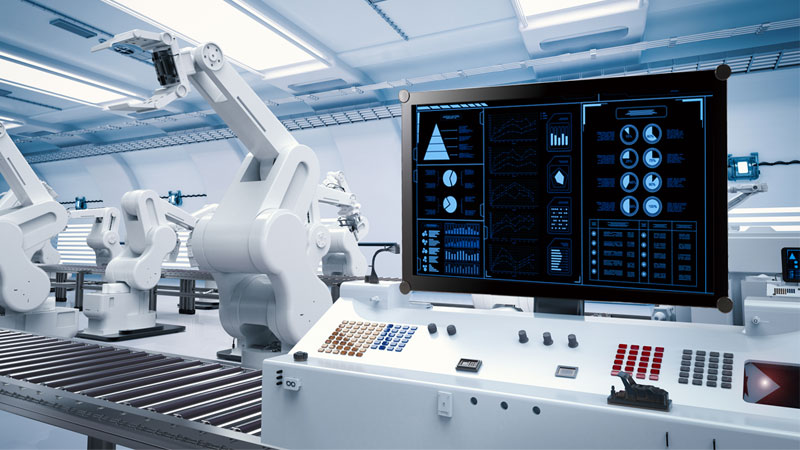
For marine, military, and outdoor situations, you need an IP65, IP66, or IP67 rating. For food and beverage processes, your monitor should have IP65 above levels or at best IP69K. For other sectors, such as pharmaceutical or manufacturing and industrial, the rating should be IP65, at least. Full dust protection is necessary if you need your touch screen to be operating 24/7. In this case, the first digit of the IP rating would be “6.”
The major difference between an IP67 rating and an IP65 rating is how much they protect against liquid. The second digit of the IP rating with “5” means that the device can withstand the impact of water jets without any negative effects. This is from any direction. A touch screen with an IP67 rating provides much more protection against liquid ingress. Additionally, it can be immersed in water.
If it has at least an IP65 level of protection, then it provides total protection against dust and airborne particles. Additionally, it has well liquid ingress protection when a 6.3 mm nozzle is spraying water upon the touch screen. The work environment will determine what rating is needed. The IP65 rating is protective enough to water splash and airborne particles from causing harm to the touch screen.
Conclusion
When selecting a touch screen monitor like the IP65 touch screen monitor, there are several considerations you have to make. First of all, you have to think about where the screen will be placed. Will it be somewhere with heavy foot traffic?
If so, you need a screen that’s very dust resistant. If, on the other hand, the screen will be outside, then it needs to have the right protection against inclement weather. In this case, it needs high protection against both water and exterior particles.
Once you’ve thought about where the screen will be, you have to think about what applications it will be used for. If you plan on having a screen used for customer orders, then the screen will be touched often. The same goes if the screen is in a museum or transportation area setting. In this case, it needs to have a higher IP rating because of its high use.
On the other hand, you might be using it for industrial applications. In this case, it’s even more important that the IP rating be higher, sometimes even more than IP65. This may even be the case for light industrial use.
You may be operating with high heat, a large amount of liquid, and potentially even chemicals that require workers to wear gloves while using the touchscreen. For this reason, you may need the touch screen to be more resistant against dust and water while still able to react to touch even with gloves.
Finally, you need to think about how durable the screen needs to be. Do you plan on using it 24/7? Will it be outside in an area where there are many storms and high winds? What types of materials and substances will it be exposed to? Answering these questions will help you determine what durability you need to look for when selecting the IP rating for your touch screen.
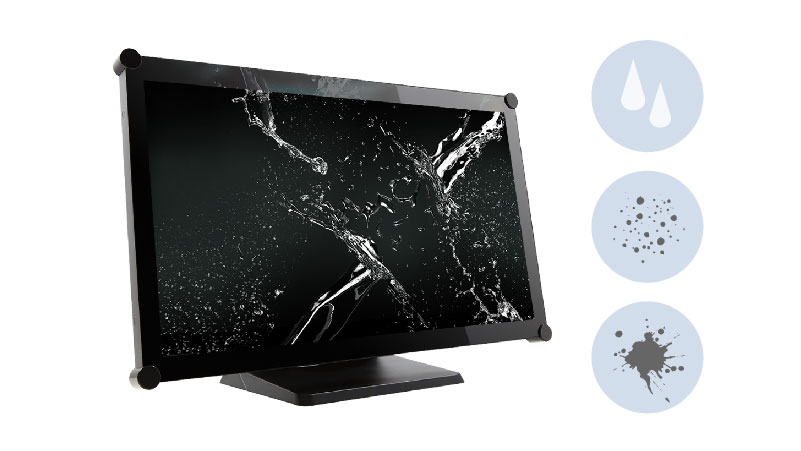
If you’re looking for the best touch screen for you, you should look no further than the AG Neovo TX-Series, TX-3202 and TX-10, featuring PCAP touch technology and a front IP65 screen. They are ideal for light industrial and commercial users. Additionally, the TX-Series, TX-3202 and TX-10 help light industrial and commercial users avoid problems. In addition to having the reliability and durability that comes with the IP65 rating, it also comes with flexible mounting options and varying resolutions.